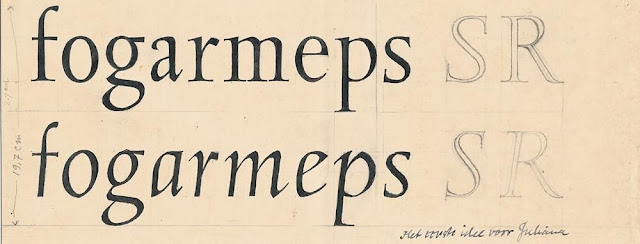Frustrated by the dearth of information about Hartz in English, Inferno Press commissioned Mathieu Lommen, a curator at the Special Collections Department at the Amsterdam University Library and friend of Hartz, to write the story of the design of Linotype Juliana. Sem Hartz and the Making of Linotype Juliana is the first publication in the English language dealing exclusively with the making of this face. It is the kind of book Inferno Press was created to publish.
The text has been laser-printed on archival paper using a newly digitized version of Juliana. In fact, this is the inaugural appearance of this font, which is now commercially available from the Font Bureau. Photographic reproductions of Hartz's early drawings for Juliana are tipped in. The cover is letterpress-printed on a Nepalese Lotka paper (various colours) or on an orange Zerkall Ingres. 8 ¼ by 5 inches. 15 pages. 100 numbered copies. Stitched into soft covers. Out of print.
Review
'For those interested in type design, and particularly those interested in the gestation of a typeface through to its commercial availability, this little vignette — just eight pages of text with three tip-in illustrations — in a format slightly larger than a paperback, provides a snapshot of the creative and mechanical processes of typefounding, that was literally in its dying days during the 1950s. This is essentially the story of Juliana, the only accomplished typeface designed by Sem Hartz, the trials and tribulations of bringing it to market, where the incredibly slow pace of seven and a half years was extreme, judged even by the archaic methods of type production just some fifty years ago. . . .'
— Reviewed by Dave Farey in Parenthesis 14, February 2008





